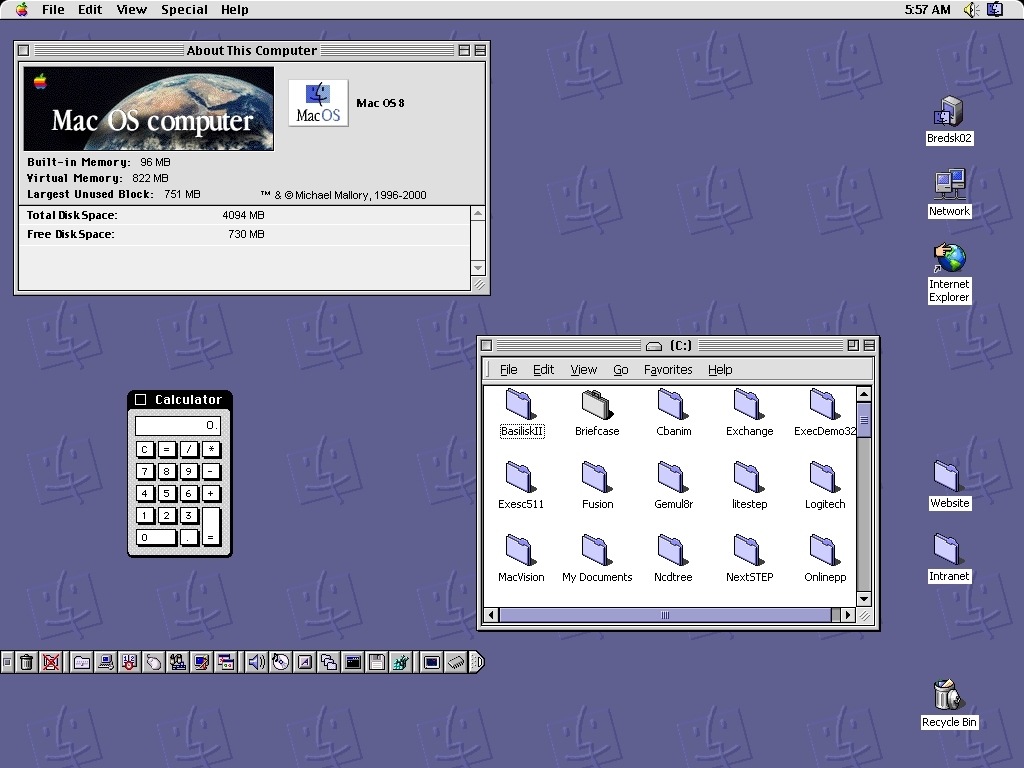


In Mail, Groups are located under the Groups node for your account. View all your Microsoft 365 Groups in Mail and Calendar views. You can choose to email a message to the organizer and respond with your RSVP. Respond to meeting invites directly from the Reading pane. When creating events, get suggested meeting times based on your recipients’ availability. Select Task Pane in the View menu or use keyboard shortcut Shift+Command+] to open it. See your daily Calendar agenda from a new task pane in the main window for Mail. Click in the Search field or use keyboard shortcut Shift+Command+F to search. Search is now powered by Microsoft Search and has better results and suggestions. In the Toolbar, select the more icon, then Customize Toolbar…. The new Outlook has many new features and improved experiences, including:Ĭhoose commands to display in the Toolbar.
#Classic mac os archive for mac#
What's new in Outlook for Mac - Highlights Open Outlook, then turn on the New Outlook switch.Īt any time, you can switch back by launching Outlook, then click on the Help menu and select Revert to Legacy Outlook.īefore switching back, you'll have the opportunity to provide feedback on the experience and to create an in-app reminder for when additional features become available. Support for POP is now available in Current Channel version 16.50 (21061300+).įor other requirements, refer to System requirements for Office. Support for Yahoo and IMAP is now available in Current Channel version 16.46 (21021202+). Requirementsġ6.42 (20101102) and later for Current Channel.ġ6.40 (20073000) and later for Current Channel (Preview).ġ6.32 (19110306) and later for Beta Channel.Ī Microsoft 365 Exchange Online,, Google, iCloud, Yahoo, POP or IMAP account. Much work was done by Daniel Brooks, Phil-el, James Baicoianu, and Vitorio Miliano, with Daniel Brooks putting in multiple weeks of refinement.This article tells you everything you can expect from the all-new Outlook for Mac.įor more information about the new Outlook for Mac functionality you can check Get help with new Outlook for Mac. They all provided continued assistance as the Emularity team approached refining the emulator to work within the Archive’s framework. Many people worked very hard to bring this emulation system to bear: Hampa Hug created PCE (the original Macintosh emulator program). Experiments and work by James Friend (PCE.js) and Marcio T. (Retroweb) ported PCE to javascript via Emscripten.
#Classic mac os archive software#
While it is a ( warning) 40 megabyte download, this compilation of System 7.0.1 includes a large variety of software programs and a rather rich recreation of the MacOS experience of 1991.Įnjoy this (9-inch, black and white) window into computer history! The story of the creation of the operating system and the Macintosh itself are covered in many collections at the Archive, including this complete run of Macworld magazine and these deep-dive Macintosh books.Īs for the programs currently presented, they are in many cases applications that have survived to the present day in various forms, or are the direct ancestors. At the time the machine was released, however, they landed new ideas in the hands of a worldwide audience and gained significant fans and followers almost immediately. If you’ve not experienced the original operating system for the Macintosh family of computers, it’s an interesting combination of well-worn conventions in the modern world, along with choices that might seem strange or off-the-mark. This is a curated presentation of applications, games, and operating systems from 1984-1989. The first set of emulated Macintosh software is located in this collection. While there are certainly predecessors to the computer desktop paradigm, the introduction of the Macintosh brought it to a mass market and in the 30 years since, it has been steadily adapted by every major computing platform and operating system.
#Classic mac os archive archive#
After offering in-browser emulation of console games, arcade machines, and a range of other home computers, the Internet Archive can now emulate the early models of the Apple Macintosh, the black-and-white, mouse driven computer that radically shifted the future of home computing in 1984.


 0 kommentar(er)
0 kommentar(er)
